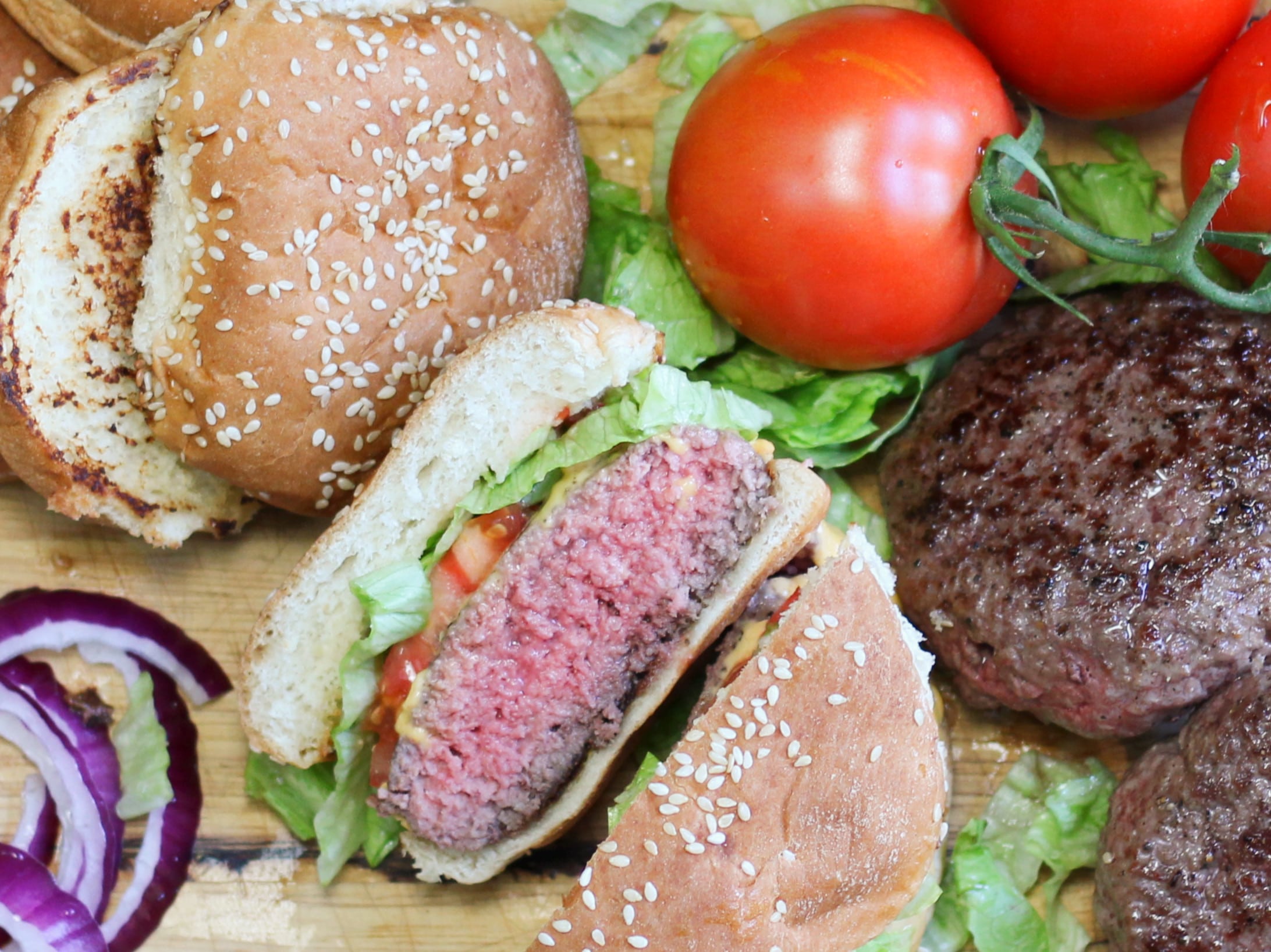My g-d, how I've missed good burgers.
Back not too long ago when you ordered a burger, the waitress would ask "how do you want it?"
Medium rare!
Can't hardly do that anymore with ground beef due to E. Coli.
The E. Coli contaminated exterior of beef cuts becomes the inside when it is ground. Some people takes their chances, but now you don't have too.
Using sous vide you can trade time at a lower cooking temp to create safe, tender delicious thick burgers.
Internal temps as low as 125°F are safe from E. Coli, salmonella and other food borne bacteria when the meat is cooked for an hour at that temperature.
Here is an article from WaPo that generally explains the mechanics... That food borne bacteria is killed in less than a second at 155° while it takes about eight minutes at 140°.
I've had this ninja speedi with sous vide function for five or six months and sous vide cooking is unexpectedly simple.
Literally set it and forget it.
You can even do frozen patties, steaks or chops...it just takes longer.
And you don't really have to worry about time. You have a window...40 minutes to four hours or more for fresh (my directions say double bag if you're going over four), maybe an hour and a half to six hours for frozen. At 8-10 hours your protein may change texture or get mushy.
Tonight I went 2.5 hours while I ran to the store and did some errands.
⅔ lbs burgers at 135°.
They barely shrank.
Pulled them out and seared them in a cast iron skillet for 30 seconds on each side at the highest temp my range top could muster...added cheese and let them rest while I butter toasted the buns.
I haven't had a better burger in a long time. I would say worth the effort...but there was remarkably little effort involved.
Here are some links.

 thespicyapron.com
thespicyapron.com
Times and temps.

 www.amazingfoodmadeeasy.com
www.amazingfoodmadeeasy.com
Not hamburger, but a video of the ease of sous vide...
Back not too long ago when you ordered a burger, the waitress would ask "how do you want it?"
Medium rare!
Can't hardly do that anymore with ground beef due to E. Coli.
The E. Coli contaminated exterior of beef cuts becomes the inside when it is ground. Some people takes their chances, but now you don't have too.
Using sous vide you can trade time at a lower cooking temp to create safe, tender delicious thick burgers.
Internal temps as low as 125°F are safe from E. Coli, salmonella and other food borne bacteria when the meat is cooked for an hour at that temperature.
Here is an article from WaPo that generally explains the mechanics... That food borne bacteria is killed in less than a second at 155° while it takes about eight minutes at 140°.
I've had this ninja speedi with sous vide function for five or six months and sous vide cooking is unexpectedly simple.
Literally set it and forget it.
You can even do frozen patties, steaks or chops...it just takes longer.
And you don't really have to worry about time. You have a window...40 minutes to four hours or more for fresh (my directions say double bag if you're going over four), maybe an hour and a half to six hours for frozen. At 8-10 hours your protein may change texture or get mushy.
Tonight I went 2.5 hours while I ran to the store and did some errands.
⅔ lbs burgers at 135°.
They barely shrank.
Pulled them out and seared them in a cast iron skillet for 30 seconds on each side at the highest temp my range top could muster...added cheese and let them rest while I butter toasted the buns.
I haven't had a better burger in a long time. I would say worth the effort...but there was remarkably little effort involved.
Here are some links.

Sous Vide Burgers - Perfect Burgers Every Time!
Sous Vide Burgers - by far the easiest way to get perfect burgers every time. Don't knock it till you try it. Best. Burger. Ever.
Times and temps.

Easy Sous Vide Hamburger Recipe and How To Guide
This sous vide hamburger recipe makes it easy to cook burgers at any temperature while ensuring that they are perfectly safe to eat. I use it for all my parties!
Not hamburger, but a video of the ease of sous vide...









:max_bytes(150000):strip_icc()/__opt__aboutcom__coeus__resources__content_migration__serious_eats__seriouseats.com__recipes__images__2015__07__20150702-sous-vide-hamburger-anova-primary-bf5eefff4505446f9cbf33f5f2d9b2e6.jpg)
